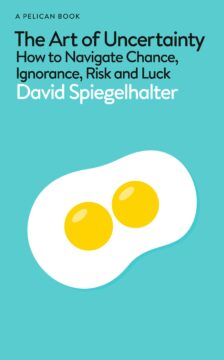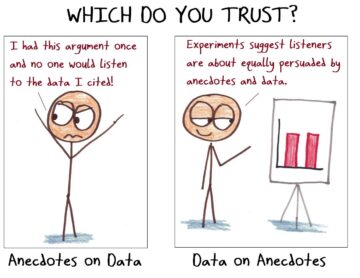Niklas Serning in Aeon:
 I became a psychotherapist and psychologist to maximise the good I could do in the world. It seemed obvious that helping people by engaging with the root of their suffering would be the most helpful thing to do. I also became a child psychotherapist to address the roots of suffering in childhood, where they seemed to stem. I experienced how deepening into a feeling could transform it, and learned about pre-natal trauma; I even wrote a doctorate on trauma. Now, two decades into my career, I practise, lecture, supervise and write about all of these things, but increasingly I reject everything that I learned. Instead, I practise the art of ‘being for another’, an idea that arose in conversation with my colleague Sophie de Vieuxpont. I’m a mentor, a friend in an asymmetrical friendship, and a sounding board and critical ally assisting people as they go through the complexities, absurdities, devastations and joys of life.
I became a psychotherapist and psychologist to maximise the good I could do in the world. It seemed obvious that helping people by engaging with the root of their suffering would be the most helpful thing to do. I also became a child psychotherapist to address the roots of suffering in childhood, where they seemed to stem. I experienced how deepening into a feeling could transform it, and learned about pre-natal trauma; I even wrote a doctorate on trauma. Now, two decades into my career, I practise, lecture, supervise and write about all of these things, but increasingly I reject everything that I learned. Instead, I practise the art of ‘being for another’, an idea that arose in conversation with my colleague Sophie de Vieuxpont. I’m a mentor, a friend in an asymmetrical friendship, and a sounding board and critical ally assisting people as they go through the complexities, absurdities, devastations and joys of life.
Along the way, over years of practise, I lost faith that awareness was always curative, that resolving childhood trauma would liberate us all, that truly feeling the feelings would allow them to dissipate, in a complex feedback loop of theory and practice.
More here.
Enjoying the content on 3QD? Help keep us going by donating now.

 W
W The literature showed insects to be far more sophisticated than one might expect of an automaton. Many have nociceptors that send signals to other parts of the insect brain, such as the central complex (associated with spatial navigation and locomotion) and the mushroom bodies (linked to learning, memory, and sensory integration). Cockroaches have a nervous-system pathway that leads up from the body to the brain and back again. In a 2019 study, researchers exposed cockroaches to a hot stimulus and a neutral stimulus; the neutral stimulus prompted a weaker signal from the body to the brain, and the hot stimulus led the roaches to try and escape. (Unsettlingly, cockroaches without heads responded to the heat but did not try to escape.) A recent genomic study of mantises, which are notorious for eating their mates during and after sex, found genes that code for nociceptive ion channels—proteins that respond to pain.
The literature showed insects to be far more sophisticated than one might expect of an automaton. Many have nociceptors that send signals to other parts of the insect brain, such as the central complex (associated with spatial navigation and locomotion) and the mushroom bodies (linked to learning, memory, and sensory integration). Cockroaches have a nervous-system pathway that leads up from the body to the brain and back again. In a 2019 study, researchers exposed cockroaches to a hot stimulus and a neutral stimulus; the neutral stimulus prompted a weaker signal from the body to the brain, and the hot stimulus led the roaches to try and escape. (Unsettlingly, cockroaches without heads responded to the heat but did not try to escape.) A recent genomic study of mantises, which are notorious for eating their mates during and after sex, found genes that code for nociceptive ion channels—proteins that respond to pain. As the first ever memoir by a sitting pope, Hope is a publisher’s dream, with a rich backstory culminating in Francis’s election in 2013. It recounts how, as Jorge Bergoglio, grandchild of Italian immigrants to Argentina, he grew up in a sprawling family, loved football and the tango (which he calls “an emotional, visceral dialogue that comes from afar, from ancient roots”), studied chemistry, then joined the Jesuit order and became a priest. After dallying with Peronism and enduring the Argentinian junta, he became the cardinal archbishop of Buenos Aires. Then, just as he was planning his retirement, Benedict XVI resigned and he was chosen as his successor.
As the first ever memoir by a sitting pope, Hope is a publisher’s dream, with a rich backstory culminating in Francis’s election in 2013. It recounts how, as Jorge Bergoglio, grandchild of Italian immigrants to Argentina, he grew up in a sprawling family, loved football and the tango (which he calls “an emotional, visceral dialogue that comes from afar, from ancient roots”), studied chemistry, then joined the Jesuit order and became a priest. After dallying with Peronism and enduring the Argentinian junta, he became the cardinal archbishop of Buenos Aires. Then, just as he was planning his retirement, Benedict XVI resigned and he was chosen as his successor.
 After Donald Trump was first elected, the same political scientists who had adamantly insisted that he could never win a presidential election quickly coalesced on the same interpretation of his success. He was an authoritarian populist who cleaved the electorate into “real” Americans and everybody else, promising to put the former in charge while banishing the latter to the margins (or, according to the more extreme alarmists, putting them in camps). On this interpretation, two things were intrinsically linked: Trump’s demagogic talent for mobilizing popular opinion against the norms and values of a deeply mistrusted establishment; and his apparent alliance with a predominantly white and elderly electorate that had experienced a decline in their social status, feared the future, and was ready to resist change by any means necessary.
After Donald Trump was first elected, the same political scientists who had adamantly insisted that he could never win a presidential election quickly coalesced on the same interpretation of his success. He was an authoritarian populist who cleaved the electorate into “real” Americans and everybody else, promising to put the former in charge while banishing the latter to the margins (or, according to the more extreme alarmists, putting them in camps). On this interpretation, two things were intrinsically linked: Trump’s demagogic talent for mobilizing popular opinion against the norms and values of a deeply mistrusted establishment; and his apparent alliance with a predominantly white and elderly electorate that had experienced a decline in their social status, feared the future, and was ready to resist change by any means necessary. Unknowability was everywhere, not just in my interactions with people, but in the life and world I was eagerly observing. One morning early, maybe five a.m., I woke in a one-room shack of boards with a dirt floor and a thatched roof. It was raining. I had no bed; slept on a pallet. The thatch leaked, making the floor a muddy lake whose shore brushed my pallet.
Unknowability was everywhere, not just in my interactions with people, but in the life and world I was eagerly observing. One morning early, maybe five a.m., I woke in a one-room shack of boards with a dirt floor and a thatched roof. It was raining. I had no bed; slept on a pallet. The thatch leaked, making the floor a muddy lake whose shore brushed my pallet.
 C
C In 2021, writer Will Hall began scraping Kevin Killian’s reviews from Amazon’s servers and, thanks largely to his efforts, Semiotext(e) published Kevin Killian: Selected Amazon Reviews in November. The 697-page collection rescues from obscurity some of the over two thousand reviews the poet, playwright, novelist, biographer, editor, critic, and artist posted to the platform from 2003 until his death in 2019. He was a great consumer of books, music, and film but also discussed the odd product. Killian’s reviews can be read as meditations on the objects and media that populated our lives for the first twenty-five years of the twenty-first century. He imbued ordinary items – duct tape, a toaster, a DVD—with personal meaning.
In 2021, writer Will Hall began scraping Kevin Killian’s reviews from Amazon’s servers and, thanks largely to his efforts, Semiotext(e) published Kevin Killian: Selected Amazon Reviews in November. The 697-page collection rescues from obscurity some of the over two thousand reviews the poet, playwright, novelist, biographer, editor, critic, and artist posted to the platform from 2003 until his death in 2019. He was a great consumer of books, music, and film but also discussed the odd product. Killian’s reviews can be read as meditations on the objects and media that populated our lives for the first twenty-five years of the twenty-first century. He imbued ordinary items – duct tape, a toaster, a DVD—with personal meaning. I’ve come to see this as a basic dynamic in math education reform: an illusory spirit of consensus. Clearly math education needs more something. But more what?
I’ve come to see this as a basic dynamic in math education reform: an illusory spirit of consensus. Clearly math education needs more something. But more what?